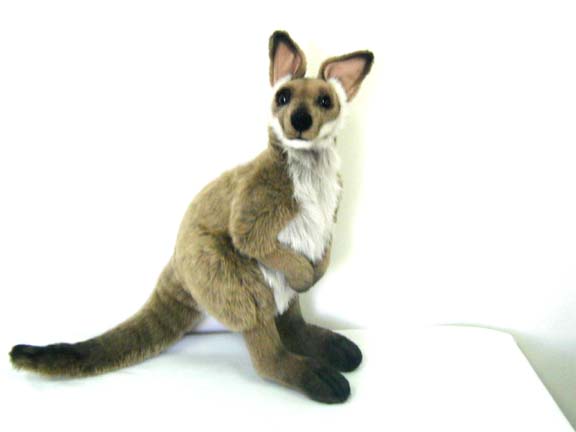HTC: 3646
Wallaby
Description Wallabies are related to kangaroos and are widely distributed in different parts of Australia and New Guinea. There are several species of this animal and they are grouped based on their habitat (e.g., rock wallabies, brush wallabies, and shrub wallabies). The Hare Wallabies are named as such because of their size and behavior that is similar to hares. The size of these animals ranges from small to medium, but the largest known wallaby reaches 6 feet when measured from tail to head. As for their weight, it can range between 4 lbs to 53 lbs. These animals are herbivorous and typically eat grass, leaves, vegetables, and other types of vegetation. They have large tails that they use for maintaining balance, and can move at a high speed and jump great distances with the help of their hind legs that are very powerful. Similar to kangaroos, they can also use their strong legs when battling other male wallabies or to kick predators. All species of wallabies are marsupials. When the young wallaby is born, it immediately crawls into the pouch of its mother where it will continue to develop for a couple of months. Just like kangaroos, baby wallabies are called joeys.
Status Four species of Wallabies are already categorized as extinct, while many are categorized as Endangered and Vulnerable. Their populations are threatened because of hunting by poachers. Some people hunt them for their fur, while others do it for fun.
You must be logged in to post a review.
Related products








Reviews
There are no reviews yet.